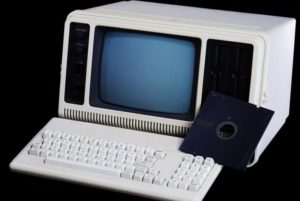There are many great benefits to the rapid evolution of technology today. Software and equipment advances are constantly on the market. These updates fix problems in earlier versions of these programs, or offer new innovations that could revolutionize the ways people work. In the office, new technologies help people to communicate better, store records more securely and keep working even when they are on the go.
While these high-tech advances can make work easier, the nonstop evolution of software and office equipment can create fiscal problems for a company. Many businesses, especially small businesses, simply can’t afford to update to the latest tech trend every time something new hits the market.
It’s a fine line to straddle between making unnecessary purchases and falling behind as the tech industry moves forward. So, how can an office tell when it’s time to upgrade its business equipment?
“Outdated software lacks the latest defenses against viruses.”
Emphasize security
The biggest risk that offices face when they don’t upgrade is an increasing vulnerability to security breaches. Outdated software lacks the latest defenses against viruses and other malware programs that hackers can use to infiltrate company systems.
According to Trend Micro, the best software systems for businesses are supported by their developers. When a program becomes too obsolete, their builders stop supporting their programs which will leave offices vulnerable. If a program is used across all computers in a company, it’s critical to stay up to date with the latest software patches and upgrades. It doesn’t have to be done the moment it’s released, if that isn’t feasible, but the source warns that ignoring several upgrades in a row increases the chance that an office will be left in the dust.

Prioritizing upgrades
For offices on a tight budget, it just isn’t feasible to jump into the latest trend every time a fancy new gadget comes on the scene. They need to prioritize where they invest their new office technology.
The first way to do that is to look at what the current needs of the office are. In a cover story on prioritizing computer upgrades, CyberTrend recommends starting by improving the connectedness of all office devices. Mobility is an important component for keeping a company competitive. Offices should make sure that all of the devices in their care are able to work together. If the desktop computers are so old they can’t perform the same functions or share cloud storage with the laptops and tablets, managers should start investing in those upgrades first. It will improve workflow so that employees can stay as productive as possible.
While connectivity is important, that doesn’t mean that all office tech should follow a one-size-fits-all approach. Administrators need to examine the needs of each department individually to make the most informed decisions. If the sales team has to spend a lot of time on the road to meet with clients, that department should be the first to get new laptops that will let them work while they travel.
Managers also need to be able to realistically picture how new technology will help their office before investing in the latest trends. Some gadgets may seem cool, but if they don’t have a practical application for the business’s needs, it could just be an unnecessary waste on a product that may be obsolete in a few short weeks.
Office technology industry piece brought to you by Marlin Equipment Finance, a nationwide provider of commercial lending solutions for small and mid-size businesses. Marlin’s equipment financing and loan products are offered directly to businesses, and through third party vendor programs, which include manufacturers, distributors, independent dealers and brokers in the security, food services, healthcare, information technology, office technology and telecommunications sectors.










